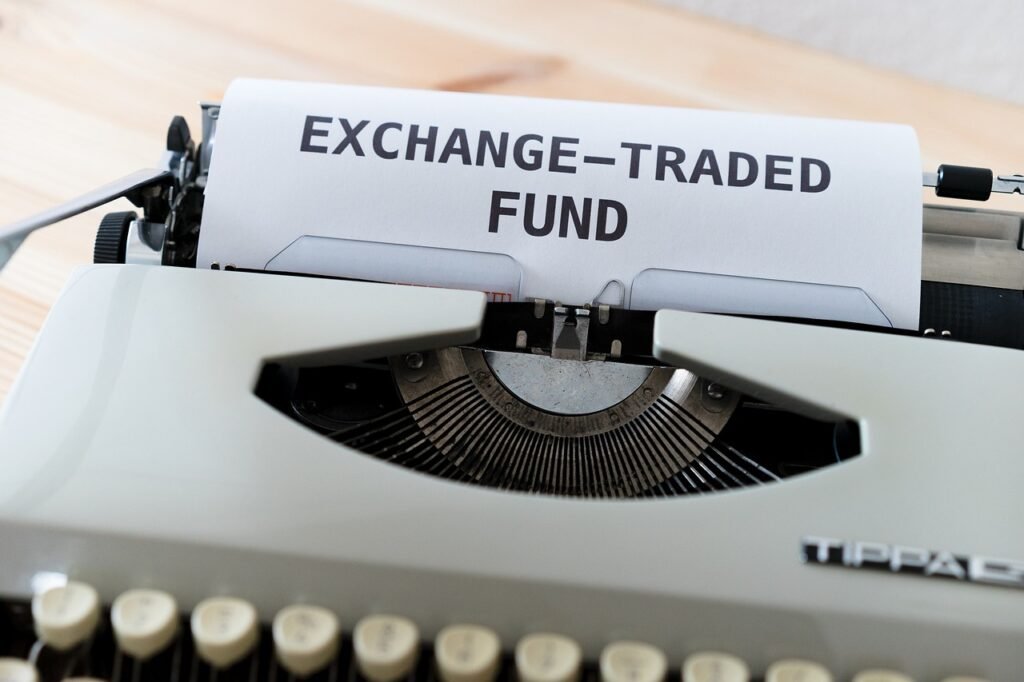Exchange-traded funds commonly known as ETFs have become increasingly popular in recent years. ETFs are similar to mutual funds in the way that they allow investors to gain exposure to a diverse range of assets with only a single investment, instead of investing in 20, 50, 100, or more stocks to diversify your portfolio, you can simply invest in one ETF that contains 100 or more stocks and get a well-diversified portfolio without having to go through doing time-consuming researches to decide which stock to pick and add to your portfolio.
Comparison between ETFs and Mutual funds:
The main distinction between ETFs and Mutual funds is that ETFs are traded on the stock exchanges, so investors have the flexibility to buy and sell shares in an ETF at its current price at any time during trading hours. Unlike ETFs, Mutual fund shares are not traded on stock exchanges, and anytime an investor buys or sells shares in a Mutual fund the transaction takes place at the end of the trading day, shares of Mutual funds are bought and sold at the fund’s closing price, the mutual fund’s closing price is calculated by taking the total value of all of the securities that are held by the fund at the end of the trading day and dividing it by the number of shares remaining in the fund. The second biggest difference between ETFs and Mutual funds resides in whether the fund gets directly affected by investors buying or selling or no, in the case of Mutual funds when an investor buys shares in a Mutual fund, the fund has more money than it had before, the fund can use the investor’s money to buy more assets and properties. Similarly, When investors sell their shares in a mutual fund, it may require the fund to sell some of its securities in order to raise cash to pay the investors who sold their shares. On the other hand, when an investor buys an ETF share he is simply buying it from another investor willing to sell that’s why the company that manages the ETF does not experience any money movement into or out of the company, and therefore there is no requirement for the company managing the ETF to buy or sell additional assets in response to the investor’s transactions.
ETFs VS. Mutual funds:
ETFs
- Lower management fees.
- Passively managed.
- Can be traded throughout the day like a stock.
- No minimum investment requirement.
- More liquid.
- Provide diversification.
- More tax efficient.
Mutual funds
- Higher management fees.
- Actively managed.
- Can only be traded at the end of each trading day.
- No minimum investment requirement.
- Less liquid.
- Provide diversification.
- Less tax efficient.
Covered call ETFs:
Covered call ETFs are exchange-traded funds that engage in the practice of selling call options based on the assets within their portfolio. In return, they collect option premiums. A call option is a financial agreement that provides the purchaser with the right, though not the obligation, to acquire the underlying asset (in this context, the ETF’s holdings) at a predetermined price (the strike price) before a specified expiry date. This approach allows the ETF to generate additional cash flow, thereby increasing its yield and offering investors potentially higher returns.
Covered call ETFs are known for their ability to provide protection against market downturns. However, they may have limitations in terms of capitalizing on the full potential of bull markets. In summary, covered call ETFs tend to outperform the broader market in bearish market conditions due to their downside protection. Conversely, they may underperform the market during bullish periods when stock prices are generally rising.
What Is a Payout Ratio?
A company’s payout ratio refers to the portion of its earnings that is allocated for distribution to its investors. This ratio can be calculated in a few ways: by dividing the total dividends by the net income, or by dividing the annual dividends per share by the earnings per share. Additionally, you can easily find a company’s payout ratio on platforms like Yahoo Finance at no cost.
Payout Ratio Formula:
Payout\;Ratio\;=\;\frac{Total\;Dividends}{Net\;Income}\\
Or
Payout\;Ratio\;=\;\frac{Annual\;Dividends\;per\;Share}{Earnings\;per\;Share}\\
Beware of the High Dividend Yield Trap:
Is a high yield always a better investment? Not necessarily. Many ETFs offer high yields, but often, it’s a deceptive lure. High dividend yields are used to entice investors into putting their money into a company’s ETF, but caution is warranted, especially when you observe a persistent decline in the share price alongside a high dividend yield. This combination suggests that the company or ETF is not performing well, and the management is attempting to mask it by offering an attractive dividend yield.
Investing in ETFs or companies employing such tactics is ill-advised because, in the end, you may find yourself losing money rather than gaining it. Typically, the high yield promised does not offset the declining share price, resulting in a negative return on investment (ROI).
The most effective way to expose these companies is by examining the company’s annual income and, most importantly, its payout ratio. If the payout ratio is excessively high, typically 70% or more, it means the company is distributing more money to investors than it can genuinely afford. Conversely, if the dividend yield is exceptionally low, around 25% or less, this indicates that the company is prioritizing reinvesting its earnings in business growth over distributing them to investors.
A reasonable payout ratio usually falls within these ranges:
- For a small company: 30% to 40%
- For a larger company: 50% to 70%
Best 5 ETFs to buy:
| Vanguard Total Stock Market ETF | VTI | This exceptionally diversified ETF tracks the performance of the entire US stock market | 0.03% |
| Schwab US Dividend Equity ETF | SCHD | This ETF focuses on the US high-quality companies that have paid dividends for more than 10 years | 0.06% |
| Vanguard Real Estate ETF | VNQ | This ETF tracks the performance of the broad US real estate market | 0.12% |
| Invesco QQQ Trust | QQQ | This ETF tracks the top 100 NASDAQ stocks, the majority of QQQ holdings tech companies | 0.20% |
| SPDR S&P 500 ETF Trust | SPY | This ETF tracks the S&P 500 index, SPY is perfectly diversified across 11 sectors and is the most frequently traded ETF in the world | 0.09% |
Author
Hi, I’m Amine! My mission is to make finance accessible and fun for everyone. I love breaking down things that seem difficult into simple, easy, and useful tips that help you make good decisions. My aim is to ensure your experience on our blog is informative and fun.
View all posts



